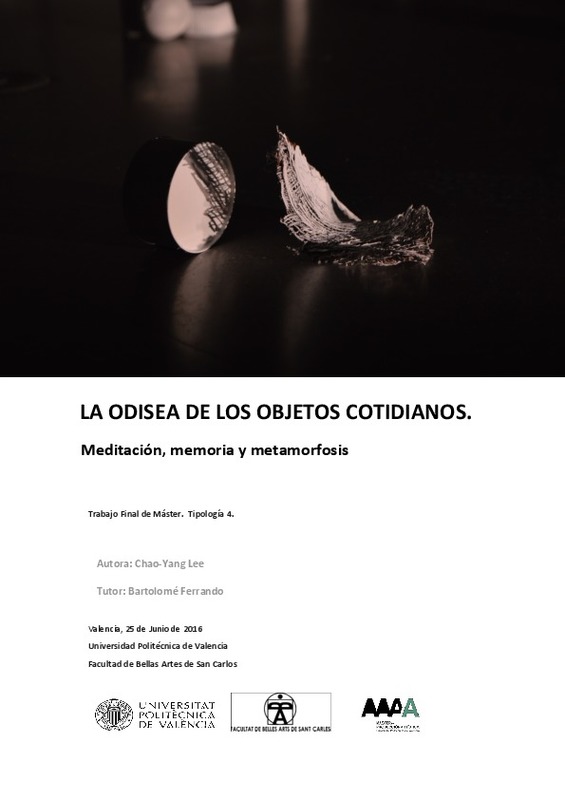JavaScript is disabled for your browser. Some features of this site may not work without it.
Buscar en RiuNet
Listar
Mi cuenta
Estadísticas
Ayuda RiuNet
Admin. UPV
LA ODISEA DE LOS OBJETOS COTIDIANOS. MEDITACIÓN, MEMORIA Y METAMORFOSIS
Mostrar el registro completo del ítem
Lee, C. (2016). LA ODISEA DE LOS OBJETOS COTIDIANOS. MEDITACIÓN, MEMORIA Y METAMORFOSIS. http://hdl.handle.net/10251/68431.
Por favor, use este identificador para citar o enlazar este ítem: http://hdl.handle.net/10251/68431
Ficheros en el ítem
Metadatos del ítem
| Título: | LA ODISEA DE LOS OBJETOS COTIDIANOS. MEDITACIÓN, MEMORIA Y METAMORFOSIS | |||
| Autor: | LEE, CHAO-YANG | |||
| Director(es): | ||||
| Fecha acto/lectura: |
|
|||
| Resumen: |
[EN] The final project of the master’s degree (TFM) is about the daily life objects and their trajectories
with the art practice; meanwhile, it intends to offer an alternative way of looking at the daily life
objects ...[+]
[ES] El TFM se divide fundamentalmente en dos partes, la primera incluye las bases teóricas, argumentos y análisis de la investigación, mientras que la segunda es la descripción y análisis de las obras realizadas. Para ...[+]
|
|||
| Palabras clave: |
|
|||
| Derechos de uso: | Reserva de todos los derechos | |||
| Editorial: |
|
|||
| Titulación: |
|
|||
| Tipo: |
|
recommendations
Este ítem aparece en la(s) siguiente(s) colección(ones)
-
BBAA - Trabajos académicos [5086]
Facultad de Bellas Artes







